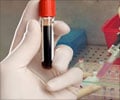Recent research has shown that HIV epidemics are emerging in several countries in the Middle East and North Africa among men who have sex with men

"The Middle East and North Africa can no longer be seen as a region immune to the HIV epidemic. Based on multiyear analysis of thousands of data sources, we documented a pattern of new HIV epidemics that have just emerged among men who have sex with men in the last few years in several countries of the region," said Ghina Mumtaz, main author of this study and senior epidemiologist in the infectious disease epidemiology group at Weill Cornell Medical College-Qatar.
The study reports that rates of HIV infection among men who have sex with men vary across the region but have already exceeded 5 percent, the threshold defining concentrated epidemics, in several countries such as Egypt, Sudan and Tunisia. In one area of Pakistan, the infection rate among men who have sex with men has already reached 28 percent. Moreover, by 2008, transmission of HIV via anal sex among men was responsible for more than a quarter of reported cases of HIV in several countries in the region. Not all countries, however, conducted studies to assess the level of HIV infection among men who have sex with men, thereby limiting the understanding of the full scale of the problem in the region.
"The level of HIV infection among men who have sex with men tells only half of the story. We also documented high levels of risky practices that will likely expose this population to further HIV transmission in the coming years," said Dr. Laith Abu-Raddad, principal investigator of the study and Assistant Professor of Public Health at the Infectious Disease Epidemiology Group at Weill Cornell Medical College–Qatar.
Roughly 2 percent of males were found to engage in anal sex with other males, a rate that is comparable to that in other regions. These males were typically involved in several types of HIV-related, high-risk behavior. For example, they had between 4 and 14 sexual partners in the past six months and their rates of consistent condom use were generally below 25 percent. In addition, between 20 and 75.5 percent of men who have sex with men exchanged sex for money, and these men commonly had several female sexual partners. The researchers also found a considerable level of intravenous drug use among men who have sex with men.
"There is a narrowing window of opportunity to prevent further epidemics. Policy-makers in the Middle East and North Africa should address this growing health challenge from a public health perspective. This will also limit the potential for HIV transmission to spread to other population groups," said Ms. Mumtaz.
Advertisement
"There is no escaping that countries in the region need to massively expand HIV surveillance systems and access to HIV prevention, testing and treatment services. We need to be ahead of the epidemic, not trailing behind it and wishing we had acted earlier," stressed Dr. Abu-Raddad.
Advertisement
Key Scientific Findings of the Study
- The fraction of men who have sex with men who are infected with HIV ranged between 0 and 28 percent across the Middle East – North Africa region.
- The HIV epidemics among men who have sex with men have emerged after 2003 and some of them have grown rapidly. Increasingly, case notification reports document a rising contribution of anal sex between men as the mode of HIV transmission.
- Roughly 2-3 percent of men engage in sexual relations with other men in this region, and these men are typically involved in several types of HIV-related high-risk behavior. This indicates a potential for further epidemics and HIV transmission among this population group.
Source-Eurekalert














